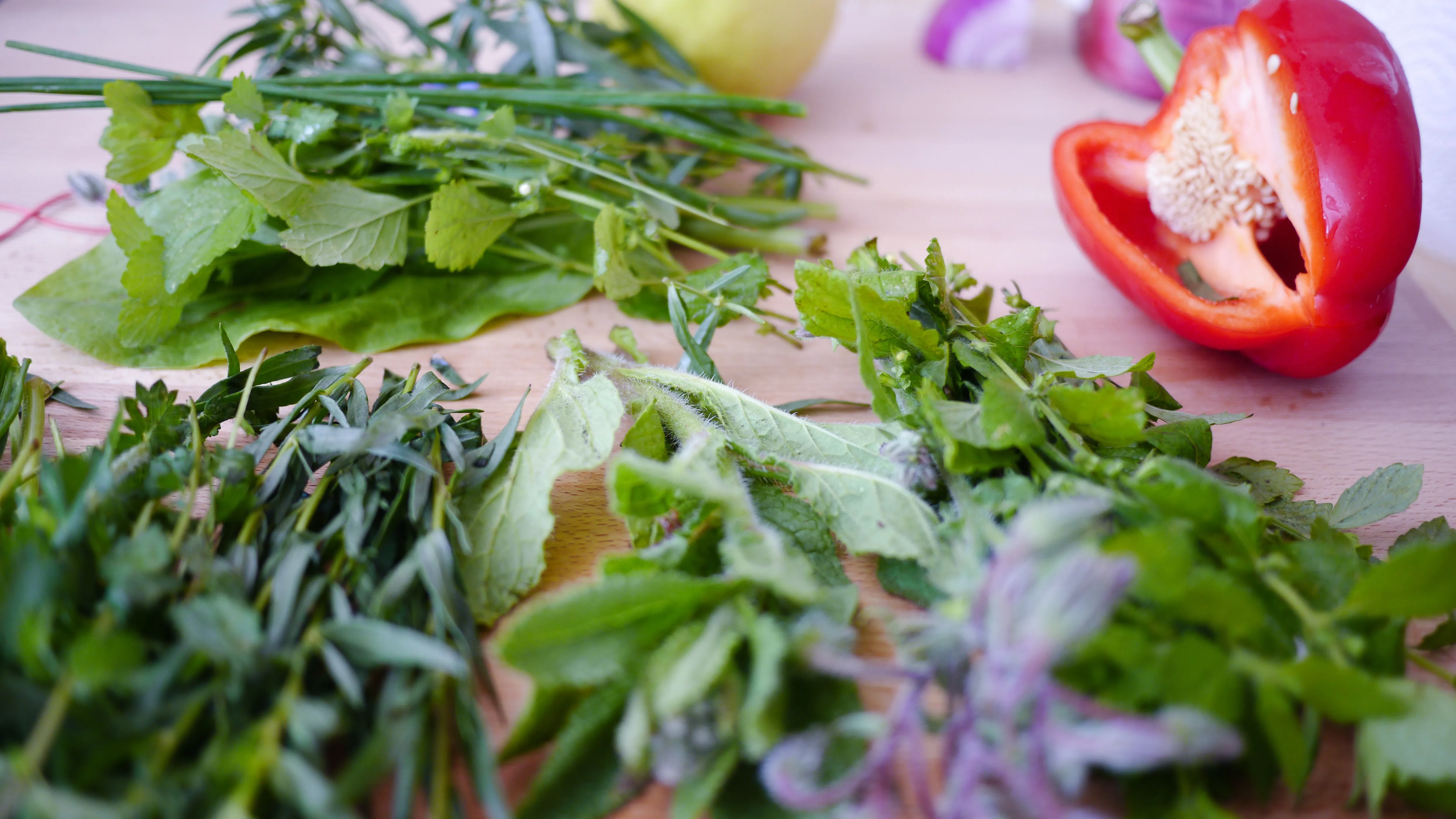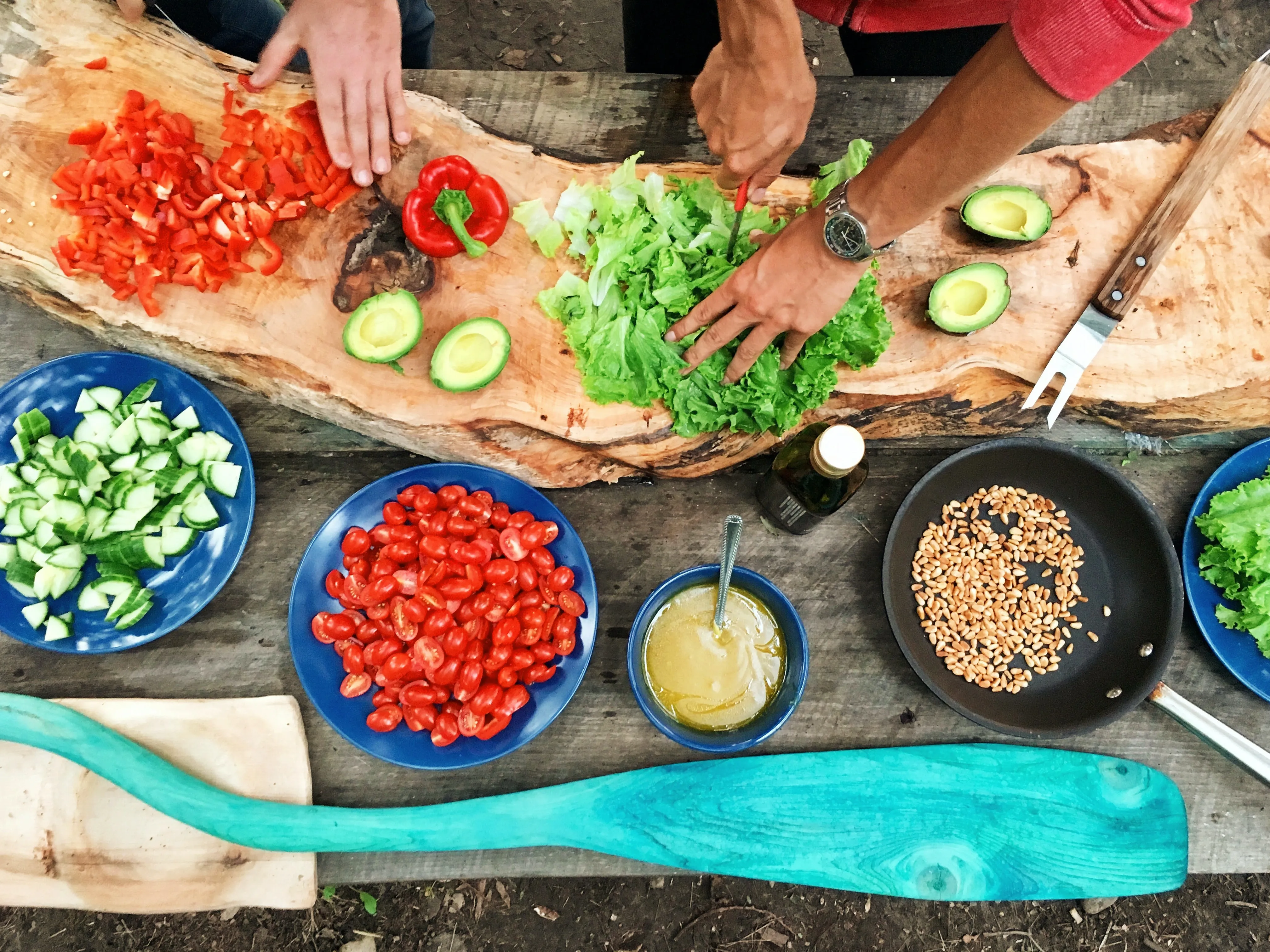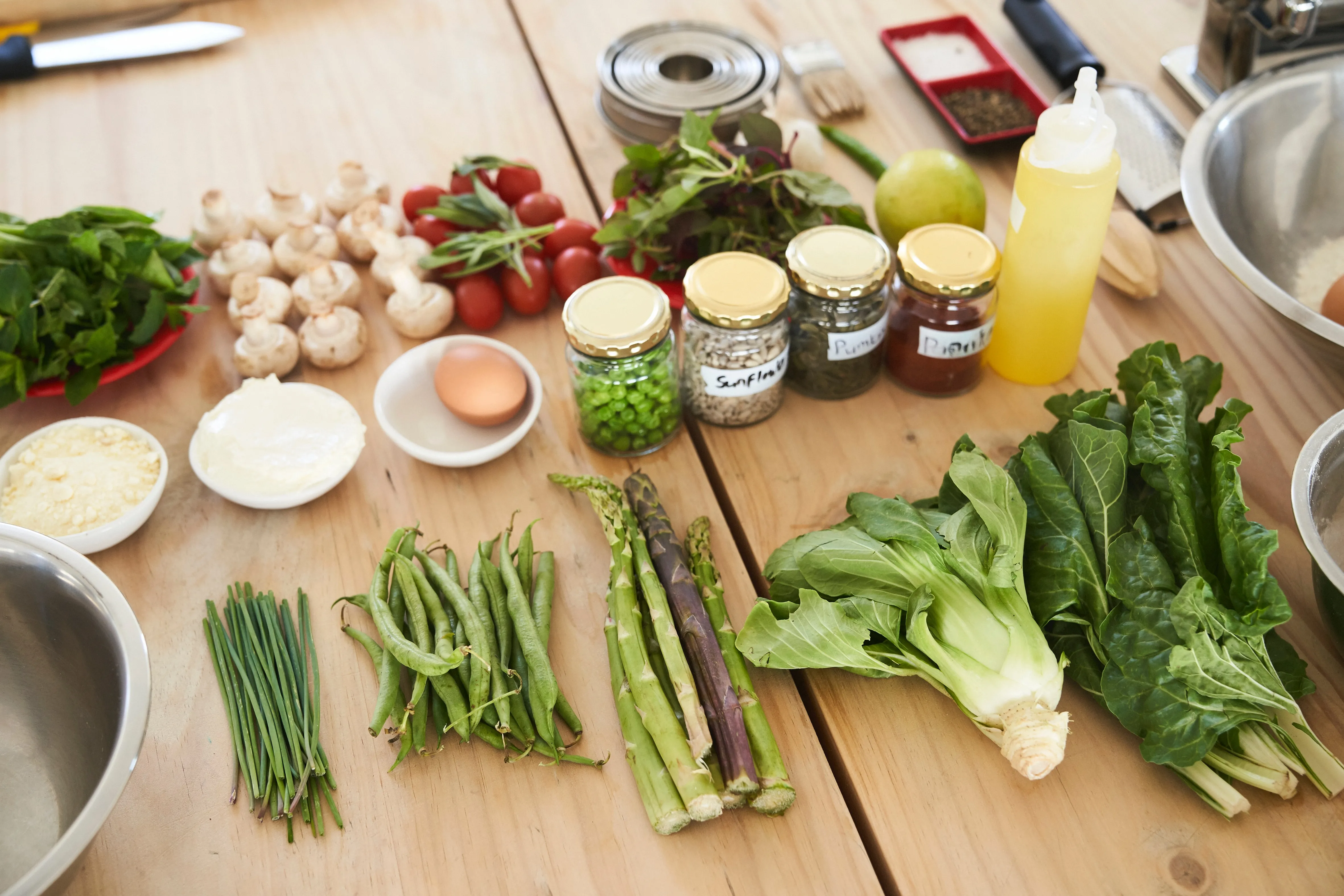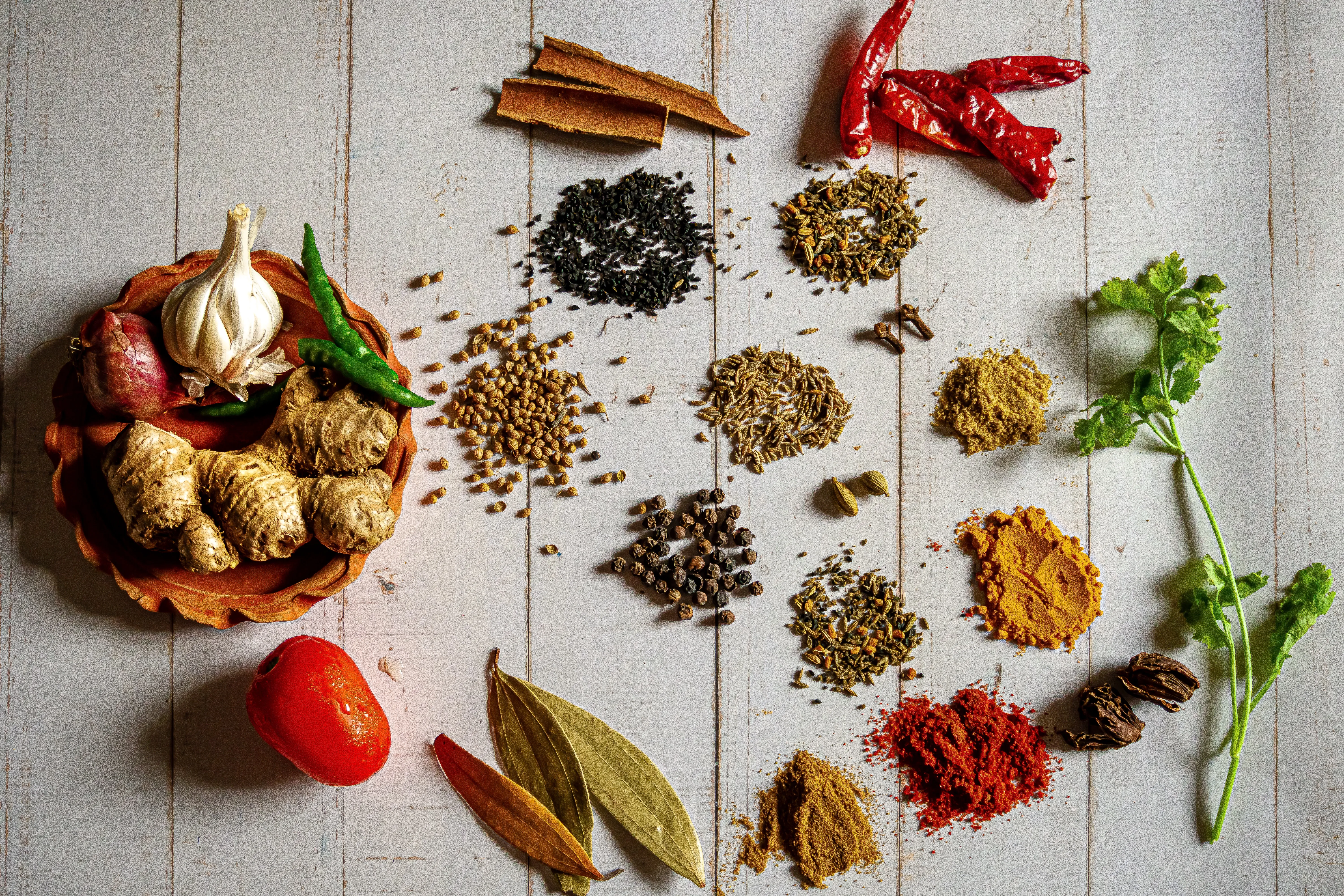Herb Garden Delights: Sowing the Seeds of Culinary Magic

From the misty hills of the Mediterranean to the tropical soils of Southeast Asia, herbs have been the heart of culinary cultures around the globe. A sprig of rosemary, a handful of mint, a sprinkling of coriander—each contributes a burst of aroma and flavour that can transform a dish into an unforgettable culinary experience. While most of us are accustomed to grabbing neatly-packed herbs off supermarket shelves, there's an unparalleled joy and a multitude of benefits in growing your own. This comprehensive guide invites you into the world of herbs, providing all the knowledge you need to start your home herb garden and incorporate fresh herbs into your dishes in the most delectable ways possible.
The Irreplaceable Charm of Home-Grown Herbs
Home-grown herbs are a game-changer for any culinary enthusiast or home cook. Not only do they elevate your dishes with flavours that are far fresher and more nuanced than their store-bought counterparts, but they also come with a host of other advantages.
Firstly, growing your own herbs gives you the incomparable satisfaction of turning a tiny seed or a small cutting into a flourishing plant. Each time you snip off a part of the plant to add into your cooking, you'll remember the care and effort you've put into nurturing the tiny shoot into a lush, fragrant herb bush.
Secondly, a pot of basil on the kitchen windowsill, a bush of rosemary in the garden or even a balcony full of various herbs adds a green touch to your home. Apart from their aesthetic appeal, herbs also contribute to improving air quality and infusing your spaces with their distinctive aromas.
Thirdly, having a constant supply of fresh herbs encourages you to experiment with your meals, trying out new recipes and exploring various cuisines. This can turn even weeknight dinners into exciting culinary explorations.
Last but not least, growing your own herbs is good for the environment. By reducing the need for commercially grown herbs, which often involve the use of pesticides and considerable transport-related carbon emissions, you're taking a small step towards more sustainable living.
Growing Your Herb Garden: A Step-by-Step Guide
Starting your herb garden can seem daunting, but with a bit of preparation and care, it can be a simple and highly rewarding endeavour. Here's a step-by-step guide to help you commence this journey:
1. Choosing Your Herbs
First things first, decide on the herbs you want to grow. As a beginner, it's advisable to start with herbs that are easy to grow and hard to kill. Some of these include:
- Basil: This quintessential Italian herb loves warm weather and plenty of sunshine. It's perfect for a sunny windowsill and is excellent in everything from pasta sauces to salads.
- Parsley: Parsley is quite hardy and grows well in moderate climates. It can do well with just partial sunlight and is a great herb to sprinkle on top of most dishes to add a touch of freshness.
- Mint: Mint is a prolific grower and very forgiving. Just give it some water, partial to full sunlight, and it'll reward you with a frequent supply of leaves perfect for teas, salads, and garnishing various dishes.
- Rosemary: Rosemary is a very hardy herb that loves sunshine and can survive without frequent watering. Its distinctive, aromatic flavour is excellent with roasted meats and potatoes.
These are just starters. Once you're comfortable with growing these, you can start experimenting with other herbs like oregano, coriander, dill, sage, and more.
2. Getting Your Herbs
You can start your herb garden with seeds, small plants, or cuttings.
- Seeds: Seeds are the most cost-effective way to start. The drawback is they take longer to grow into usable plants, and some herbs like rosemary can be quite hard to germinate.
- Plants: You can buy small herb plants from a plant nursery or even some supermarkets. These typically take lesser time than seeds to grow into full-fledged plants.
- Cuttings: Another way to start your herb garden is by using cuttings from established plants. Herbs like mint, basil, and rosemary grow well from cuttings.
3. Choosing the Right Spot
Most herbs originated in the Mediterranean region, which has a relatively mild climate and plenty of sunlight. While not all herbs need the same growing conditions, most do require a good dose of daily sunshine.
If you have a garden, you can dedicate a small area to your herbs. Some herbs like mint, which tend to spread and take over, are better grown in pots.
Don't have a garden? No worries. Many herbs grow quite happily in pots indoors. A sunny windowsill that gets at least 4 hours of sunlight daily is ideal. If you don't have a spot that gets as much sun, don't be disheartened. Many herbs, including mint and parsley, can cope with a bit of shade.
4. Planting Your Herbs
Whether you're planting seeds, transplanting small plants, or rooting cuttings, the process starts with picking the right pots and soil:
- Pots: Ensure your pots have good drainage holes. Soggy soil can quickly kill herbs. Most herbs don't need very deep pots, but they appreciate a bit of space to spread out.
- Soil: The best soil for herbs is well-draining and reasonably fertile. You can mix in a little compost with your regular potting mix to make it more nutrient-rich.
For planting seeds, plant them according to the instructions on the packet, usually at a depth of about twice the seed's diameter. Water them in gently.
For small plants, make a hole in the soil approximately the same size as the plant's root ball. Place the plant in, firm the soil around it and water it in.
For cuttings, make a hole in the soil. Dip the cut end in some rooting hormone (optional), put it in the hole, firm the soil around it and water it in.
5. Caring for Your Herbs
While different herbs have different care requirements, most herbs appreciate the following:
- Watering: Most herbs prefer their soil to dry out a bit between waterings. A good rule of thumb is to stick your finger into the soil up to your second knuckle. If it feels dry, it's time to water.
- Feeding: Herbs, in general, aren't heavy feeders. Most will do well with a little compost mixed into their potting mix at the beginning, and maybe a mild feed once every month or two during the growing season.
- Light: Ensure your herbs get at least a few hours of sunlight each day. Rotate pots every few days to ensure all parts of the plant get their share of sunshine.
- Pruning: Regular harvesting or trimming ensures the plants remain bushy and productive. Never remove more than a third of the plant at once.
6. Harvesting Your Herbs
One of the best things about growing herbs is that you don't have to wait for a 'harvest season' to enjoy the fruit of your labours. You can start usingyour herbs as soon as they have enough foliage that removing a few leaves won't harm the plant. Here's how to harvest some common herbs:
- Basil: Snip off the tips of the stems, just above a pair of leaves. This encourages the plant to branch out and gives you plenty of large, usable leaves.
- Parsley: Cut whole stems off from the base of the plant. This encourages new growth and keeps the plants from getting leggy.
- Mint: You can pretty much cut off what you need. Just try not to remove more than a third of the plant at a time.
- Rosemary: Snip off the top two-thirds of the sprigs and leave the woody parts to continue growing.
Remember, regular harvesting is good for the plants and encourages more growth, so don't be shy about using your herbs.
Getting Creative In The Kitchen: Using Fresh Herbs In Your Cooking
Now that you have a steady supply of fresh herbs, it's time to get creative in the kitchen. Fresh herbs can add a burst of flavour to a wide range of dishes. Here are some ways to use them:
1. Use In Salads
Fresh herbs are fantastic in salads. They add a burst of fresh flavour and can really take a salad to the next level. Here are some ideas:
- Basil: Add it to a tomato and mozzarella salad for a classic Caprese.
- Parsley: It's not just for garnish. A parsley salad with bulgur wheat, tomatoes, and a lemon dressing is known as tabbouleh in the Middle East.
- Mint: Use it in a fresh and zesty cucumber salad.
- Rosemary: Its pine-like flavour can be a great addition to a roasted potato salad.
2. Add To Soups
Fresh herbs can add depth to the flavour of soups. You can either add them at the beginning of cooking to infuse the soup with flavour or at the end for a more distinct taste. Here are some herbs that love to swim in pots of soup:
- Basil: It’s perfect in tomato soups or minestrone.
- Parsley: It's very versatile and works well in most vegetable soups.
- Mint: A cooling cucumber and yogurt soup wouldn't be the same without a few sprigs of mint.
- Rosemary: It’s robust enough to stand up to longer cooking, making it great in bean or lentil soups.
3. Stir Into Pasta And Risotto
Herbs can bring a new twist to your pasta or risotto. Stir them in right at the end of cooking for maximum flavour:
- Basil: Stir it into a classic tomato and garlic spaghetti for a taste of Italy.
- Parsley: Its fresh flavour can balance richer pasta dishes like carbonara.
- Mint: Stir it into a pea risotto for a refreshing twist.
- Rosemary: Its bolder flavour stands up well in a mushroom risotto.
4. Mix Into Sauces And Dips
Fresh herbs can liven up a whole range of sauces and dips. Here are a few ideas:
- Basil: Blend it with pine nuts, garlic, Parmesan, and olive oil for a classic pesto.
- Parsley: Mix it with garlic and butter for a simple and delicious garlic butter sauce.
- Mint: Blend it into a yogurt dip for a cooling side.
- Rosemary: Infuse it into olive oil for a delicious dipping sauce.
5. Bake In Bread
If you're a fan of baking your own bread, adding herbs can be a lovely way to play around with flavours:
- Basil: Add it into a tomato and olive focaccia.
- Parsley: Mix it into your dough the next time you're making a batch of dinner rolls.
- Mint: It could be a refreshing addition to a flatbread like naan.
- Rosemary: It's fantastic in traditional Italian ciabatta.
6. Garnish Your Drinks
Herbs aren't just for food. They can also make delicious and beautiful garnishes for your drinks!
- Basil: Add it to your lemonade for a refreshing twist.
- Parsley: Not common in drinks, but why not experiment?
- Mint: This is a classic addition to cocktails like mojitos or a simple mint iced tea.
- Rosemary: Its woody stems make perfect stirrers for a gin and tonic.
Overcoming Common Challenges
Even with the best care, you might sometimes face challenges in your herb-growing journey. Here are a few common ones and how to overcome them:
- Leggy plants: If your herbs start growing tall and thin instead of bushy, they probably need more sunlight. Try moving them to a sunnier spot.
- Yellowing leaves: If the leaves of your herbs start turning yellow, it could be a sign of overwatering. Remember, most herbs prefer their soil to be a little on the dry side.
- Slow growth: If your herbs aren't growing as fast as you expected, they might need food. Give them a feed with a slow-release organic fertiliser.
- Pests: If you notice your herbs have been munched on, try spraying the plants with a mild solution of water and dish soap. For tougher pests, you can use a botanical insecticide spray.
Remember, experiencing challenges and overcoming them is part of gardening. Don't let these small hiccups discourage you.
Growing and cooking with fresh herbs is a rewarding journey that can enhance your culinary skills, add a green touch to your home, and bring about a deeper appreciation for food. As you sow, nurture, harvest, and cook with your home-grown herbs, remember, each sprig not only adds layers of flavour to your dishes but is also a testament to your connection with nature, your love for cooking, and your commitment to sustainable living. So, let the fragrant world of herbs inspire you to create culinary magic and provide a sense of fulfillment. Here's to the joy of creating and the delight of sharing delicious, home-cooked meals enhanced with your home-grown herbs!





